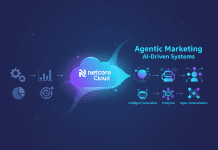Businesses must rethink how they collect and leverage consumer information in today’s data-conscious world. Traditional third-party data is rapidly becoming obsolete, while privacy regulations such as GDPR and CCPA are tightening restrictions on data usage. This shift has led to the rise of zero-party data strategies—a transformative approach that aligns with ethical marketing practices and empowers customers to willingly share their preferences.
This blog explores what zero-party data is, why it matters in a privacy-first digital landscape, and actionable strategies for B2B marketers to ethically collect, manage, and activate it to improve their martech stack.
What is Zero-Party Data?
Coined by Forrester, zero-party data refers to information that a customer intentionally and proactively shares with a brand. This can include:
- Preferences
- Purchase intentions
- Personal context
- Feedback through surveys and quizzes
- Communication channel choices
Unlike first-party data, which is collected passively via behavioral analytics, zero-party data is freely and consciously given, making it both accurate and compliant.
Why Zero-Party Data Matters
With third-party cookies on the decline and privacy legislation expanding globally, businesses need transparent and trustworthy ways to gather customer insights. Zero-party data:
- Improves personalisation without invading privacy
- Builds brand trust through transparency
- Enhances compliance with GDPR, CCPA, and similar data protection laws
- Delivers higher ROI from marketing campaigns due to better targeting accuracy
Key Strategies for Collecting Zero-Party Data
To effectively implement zero-party data strategies, businesses must create authentic, value-driven opportunities for users to share information.
1. Interactive Content
Deploy interactive tools that provide value in exchange for data:
- Quizzes (e.g., “What solution fits your business?”)
- Product configurators
- Style or usage guides
2. Progressive Profiling
Rather than bombarding users with long forms, gather data incrementally over time through:
- Signup forms
- Email preference centers
- Onboarding flows
3. Customer Surveys and Polls
Encourage feedback during key touchpoints:
- Post-purchase surveys
- Webinar feedback forms
- Account-based marketing check-ins
4. Loyalty and Rewards Programs
Offer incentives for profile completion, referrals, or product reviews, ensuring customers are informed about how their data will be used.
5. Preference Centers
Empower users to choose:
- Frequency of communication
- Topics of interest
- Preferred channels (email, SMS, in-app)
Integrating Zero-Party Data into the Martech Stack
Once collected, zero-party data should be centralized and leveraged across your marketing technologies:
- Customer Data Platforms (CDPs): Integrate data points to unify customer profiles.
- Marketing Automation Tools: Use declared preferences to trigger personalized workflows.
- CRM Systems: Enhance sales targeting and relationship management.
- Personalization Engines: Serve dynamic content based on direct user input.
For instance, if a B2B client indicates a strong interest in AI-driven solutions through a quiz, marketing automation can send tailored case studies, webinar invites, and product offers that match their intent.
Ensuring Compliance: GDPR and CCPA
Privacy-first marketing isn’t just best practice; it’s a legal obligation. Here’s how zero-party data strategies help ensure compliance:
- Explicit Consent: Data is intentionally shared with full awareness
- Transparency: Clear opt-in language and data usage disclosures
- Control: Customers can update or revoke preferences anytime
- Data Portability: Brands can export customer data upon request
When integrated into data governance protocols, zero-party data supports a sustainable compliance model.
Real-World Examples
- Sephora: Offers personalized product recommendations based on quiz results and profile input.
- HubSpot: Uses progressive profiling in its lead forms to collect relevant business insights over time.
- Spotify: Allows users to tailor playlists and listening experiences by expressing explicit music preferences.
Future Trends in Zero-Party Data
As personalization demands increase and privacy standards tighten, expect to see:
- Broader use of AI to analyze zero-party data
- Greater emphasis on data ethics and consent management
- Tighter integrations across martech platforms to activate zero-party insights in real time
Conclusion
Zero-party data is reshaping the future of customer engagement. By putting power back in the hands of consumers, businesses can foster deeper relationships, boost marketing efficiency, and stay compliant in a complex regulatory landscape.
B2B marketers should adopt ethical, scalable zero-party data strategies to achieve a high-performing martech stack that respects privacy and yields meaningful results.










